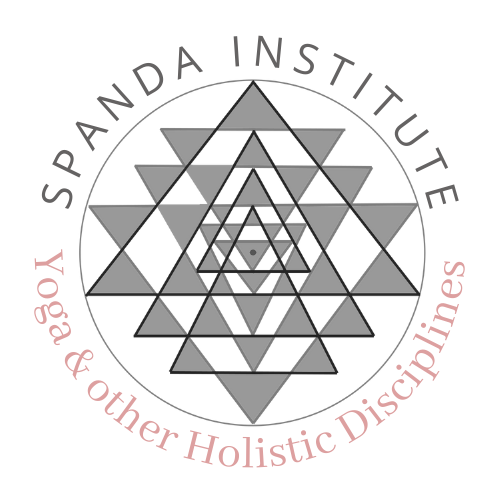The benefits of Prenatal Yoga in Pregnancy and Postpartum
If you are pregnant or a Yoga teacher whose student became pregnant, you have probably been googling "which asanas are safe during pregnancy". Whatever you may have found on Google, the truth is, there is no universal answer. Most asanas might be beneficial if you know how to adapt them for a pregnant body. If you don't, many can be harmful.
In Prenatal classes (at least the ones we offer), women are equipped with practical knowledge about the physical aspect of pregnancy and giving birth which helps them experience active, pain-free pregnancies. Another aspect of the Prenatal classes that is often neglected is the pre-hab, a proactive approach that helps avoid injuries, muscle imbalances and pain before surgery. Pre-hab helps improve the speed and effectiveness of recovery and helps prevent any imbalances in the body. Even though giving birth vaginally is not considered a surgery, it has the same components of healing for which a pre-hab can do wonders. Apart from the physical aspect, the ancient science of Yoga has many tools for supporting the holistic approach to pregnancy, birth and postpartum. It's very inspiring to see how the traditional practices of meditation, relaxation, pranayama and asanas offer the benefits that modern science continually proves to be effective and desired.
So what makes Spanda Prenatal Yoga so unique?
POSTURE
Optimally positioning the body and stacking the joints on top of one another sounds quite simple, but somewhere around the 20th week of pregnancy, the physical centre of gravity in the body changes due to the increasing size and weight of a baby inside a mother's belly. This can provoke an exaggerated lumbar lordosis, further shoulder rounding, pelvic tilt, knee hyperextension etc., which leads to back and other pain. Prenatal Yoga can help with better prenatal posture and relieve posture-related pain.
BREATHING
Once we get the posture right, this opens up the possibility of taking a big, full breath and reconnecting to the breathing diaphragm. Modern life is taking its toll on our vital functions - in many people, the muscles which facilitate breathing are overly tight, robbing them of an opportunity to experience the full potential of their breath. Pregnancy is making this even more delicate since, throughout pregnancy, the uterus moves relatively high, at one point mechanically interfering with the movements of the diaphragm. However, not all types of breathing are recommended in pregnancy, especially when discussing breathing while exercising. Quite a few breathing techniques essential in non-pregnancy workouts can cause harm.
PELVIC FLOOR
Breath is intimately connected to the pelvic floor, and learning how to work the breathing diaphragm and the pelvic diaphragm in tandem, especially during this delicate period in a woman's life, is essential. Many women find it challenging to become aware of the pelvic floor muscles and/or have a too tight/tense (hypertonic - especially my fellow yoginis!) or too loose (hypotonic) pelvic floor. The functional pelvic floor reflects in both the ability to contract the slow-twitch and the fast-twitch muscles, and something I see as most challenging to relax the pelvic floor muscles completely. A good Prenatal Yoga Teacher knows how to work with the pelvic floor to benefit the student.
CORE WORK
Core work is essential during pregnancy, but I'm not talking about abdominal crunches that might come to mind. Becoming familiar with the deepest layer of the core, and knowing how to actively "hug the baby", in combination with breathing and a pelvic floor, is one of the most important takeaways from Prenatal classes when we talk about the physical body. This is pre-hab, leading to a quicker, gentler, integrated recovery. Embodying these elements during pregnancy and avoiding the further increase of the abdominal pressure helps prevent the diastasis recti and is a foundation of postpartum recovery.
ASANA
Setting the above solid foundations and learning how to manage the increased intra-abdominal pressure makes the practice safe during pregnancy and gives freedom to play. In my maternal language, pregnancy is called "the other state", and our practice reflects that. We focus on postures and connecting transitions that best reflect the needs and abilities of a pregnant body in a particular stage of pregnancy. If everything in our body is different, from the looks to the hormonal levels - our practice should also reflect that.
MEDITATION & RELAXATION
Meditation and relaxation techniques, when practised regularly during pregnancy, can help cope with emotional challenges, reduce stress, lower blood pressure, help with sleep, deal with anxiety, experience easier birth, and help promote appropriate fetal brain and nervous system maturation (and so on). Studies show that the benefits are enhanced in a supportive group setting - precisely what a Prenatal Yoga class is. A Prenatal class becomes an intimate circle where, besides sharing these practices and pregnancy experiences, women can be seen and heard with all their struggles and joys.
EMPOWERED BIRTH
As seen in our society or portrayed in movies, birth is usually not a positive experience. Yet, birth is a miracle and should be seen as positive, not something to fear. Fear creates muscle tension, and then the muscle tension increases the perceived levels of pain, which feeds into even more anxiety. Knowledge is one component that can help break this cycle. The fear usually comes from the unknown, and knowledge of the biomechanics and physiology of pregnancy and birth and understanding the purpose of the challenging moments can empower birthing mothers to make informed and instinctual decisions, as giving birth is also primal, instinctual, and natural. A good Prenatal Yoga Teacher will be able to provide a great deal of information for mothers-to-be and help them have a safer and more empowered birth.
These are just some reasons why and how Spanda Prenatal Yoga helps during pregnancy and serves as direct postpartum preparation. We should be past the "just skip xyz asana" Prenatal modifications in Yoga classes. Our pregnant students should get a comprehensive, empowering Yoga practice that reflects their pregnancy cycles and enhance their wellbeing. This is what Prenatal Yoga should offer. If you are pregnant and need help in finding a good Prenatal Yoga Teacher, please reach out to me. If you are a Yoga Teacher and want to become an informed Prenatal Yoga Teacher, join me on one of our 85-hour Yoga Teacher Training Courses.
Gea Krajcar
Gea is the Lead Teacher for our Croatia and Slovenia 200-hour programs and a Program Director for our Prenatal Yoga Teacher Training. She is also a mother who has gone through her pregnancy and birth empowered by the knowledge she now shares in her Prenatal Yoga classes and Teacher Training courses.



